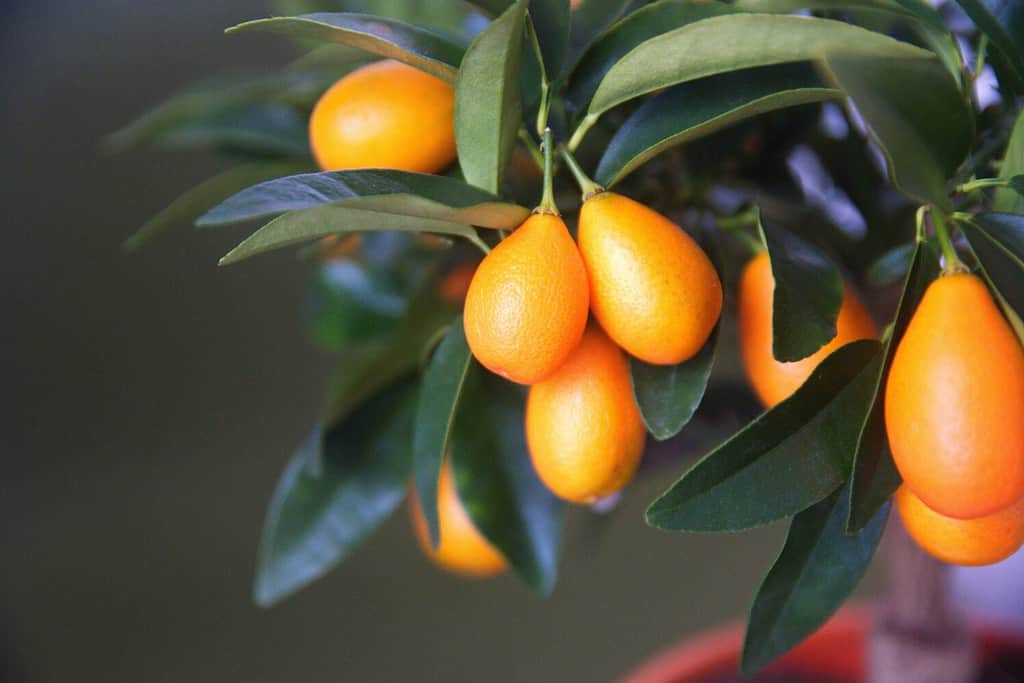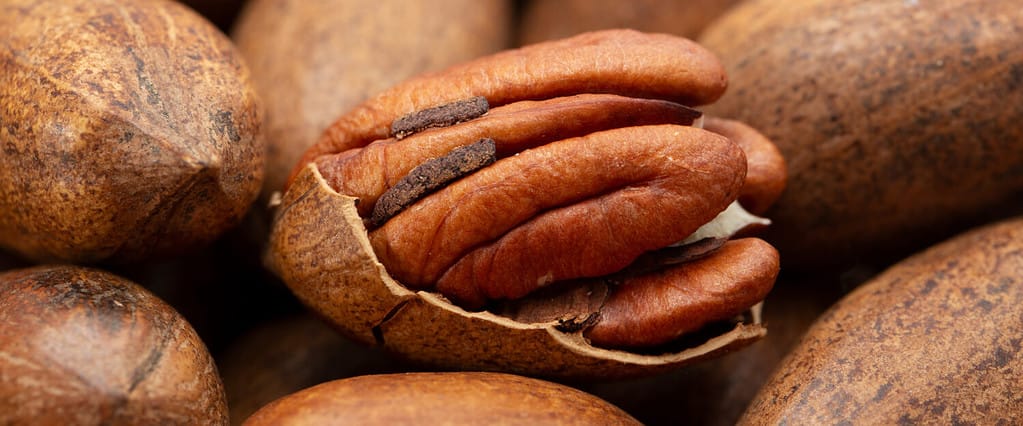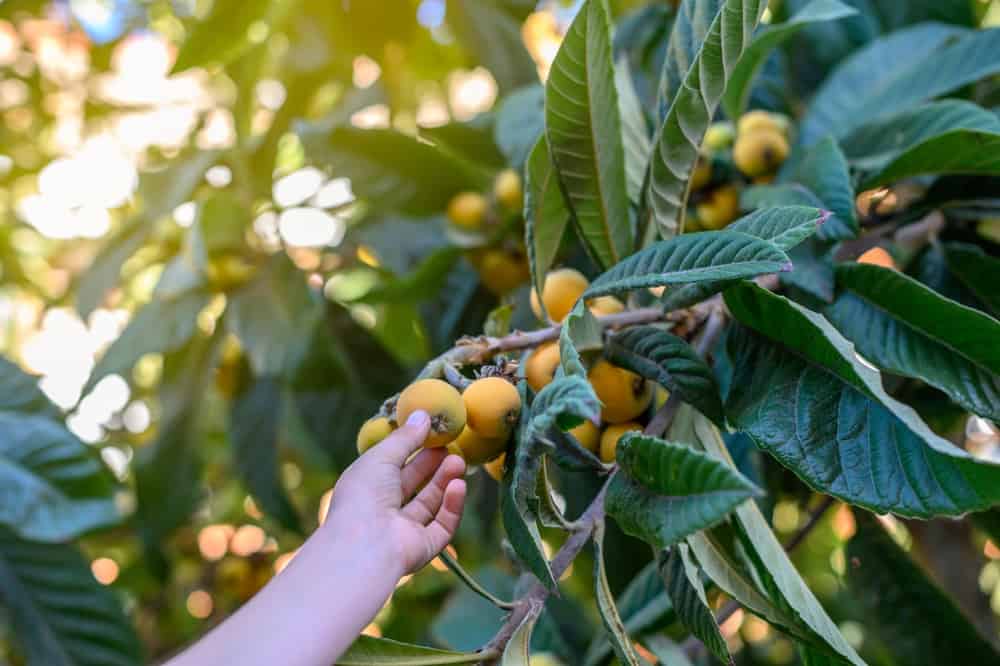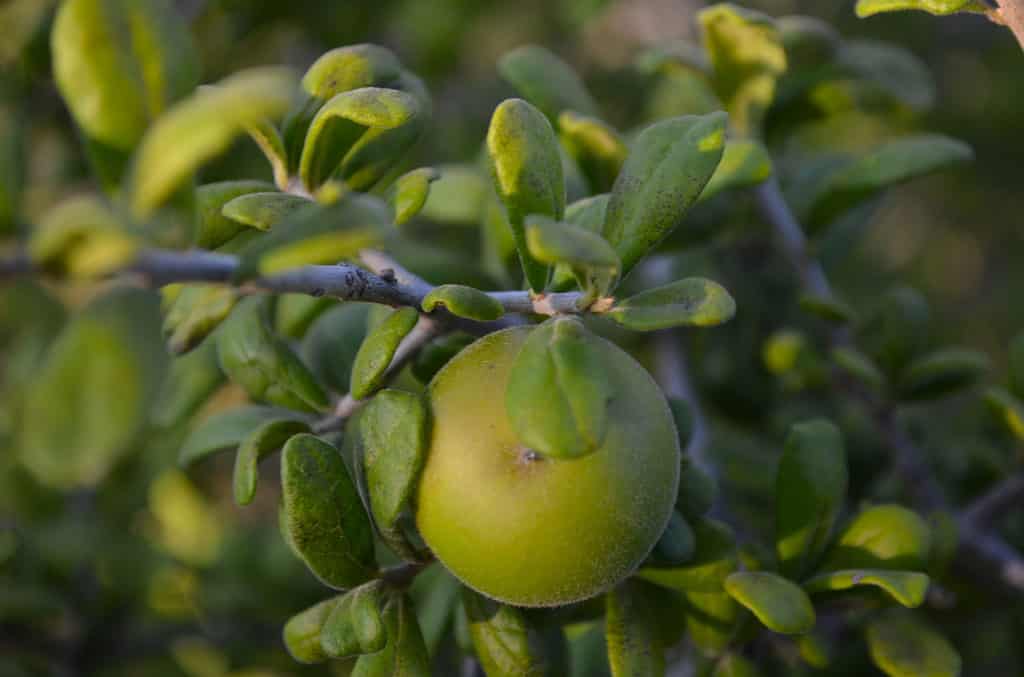South Texas’s subtropical climate provides an excellent environment for growing diverse fruit trees. These trees not only enhance the beauty of your landscape but also yield delicious fruits. This comprehensive guide explores seven types of fruit trees that flourish in the Lone Star State’s warm and arid conditions, offering insights into their origins, recommended varieties, and harvesting techniques.
1. Citrus Trees

A wide range of citrus fruits grow in Southern Texas.
©aniana/Shutterstock.com
Citrus trees, such as oranges, lemons, limes, and grapefruits, have a rich history in South Texas. Originating in Southeast Asia, they have thrived in Texas’ subtropical climate for generations. Some popular citrus varieties for South Texas include ‘Valencia’ oranges,‘ Meyer’ lemons, and ‘Ruby Red’ grapefruits.k
Citrus trees are typically harvested from November to April. To ensure the best flavor and juiciness, it’s essential to handpick to remove them from the tree, getting equipment to remove them gently. The glossy, evergreen leaves and fragrant blossoms of citrus trees add to the charm of your garden.
2. Fig Trees

These delicate treats are sweet and abundant in Texas.
©hubert/Shutterstock.com
Fig trees, native to the Mediterranean and Western Asia, are well-suited for South Texas’ climate. Varieties like ‘Celeste’ and ‘Texas Everbearing’ thrive in the region. Figs are harvested from early summer through fall.
Harvesting figs involves gently picking the ripe fruit when they are soft to the touch and have a rich color. Fig trees have broad, attractive leaves and provide a unique tropical appearance to your garden, making them a delightful addition to your landscape and table.
3. Peach Trees

Growing your peach tree in containers where you can keep it inside during cold snaps is an ideal way to grow.
©Crisp0022/Shutterstock.com
Peach trees from Northwest China have adapted well to South Texas. Varieties like ‘Redhaven’ and ‘La Feliciana’ are popular choices. Peaches are typically ready for harvest from late spring to early summer.
Harvesting peaches is simple, as ripe fruits easily detach from the tree when gently twisted. Peach trees add vibrant beauty to your garden with their pink blossoms in spring and lush foliage throughout the growing season.
4. Pecan Trees

These nut trees are a staple of Texas agriculture.
©Piotr Velixar/Shutterstock.com
Pecan trees are native to the United States and have deep roots in Texas. Varieties like ‘Desirable’ and ‘Elliott’ are well-suited for South Texas. Pecans are typically harvested from late fall through winter.
Harvesting pecans involves collecting the nuts that have fallen to the ground. Pecan trees are known for their tall, majestic stature and provide shade, beauty, and a valuable nut crop to your landscape.
5. Olive Trees

Olives are not hardy and must be moved inside during unusually cold weather.
©jessicahyde/Shutterstock.com
Olive trees, originating from the Mediterranean region, can thrive in South Texas’ climate. Varieties like ‘Arbequina’ and ‘Picual’ are commonly grown for their oil-rich fruits. In the late summer and early fall, you can see Olives harvested.
Harvesting olives involves picking the fruits when they are green and firm for table olives or waiting until they turn purplish-black for oil production. Olive trees have a timeless, elegant appearance, with silver-green leaves that add a touch of the Mediterranean to your garden.
6. Loquat Trees

A unique fruit offering in South Texas is the Loquat.
©Silvia Moraleja/Shutterstock.com
Loquat trees, native to southeastern China, are well-suited for South Texas. They produce small, sweet fruits with a unique flavor. Loquats are typically ready for harvest from late spring to early summer.
Harvesting loquats is as simple as picking the ripe fruit by hand when they are yellow or orange and slightly soft. Loquat trees are relatively small and compact, making them an excellent choice for smaller gardens and urban landscapes. Their large, glossy leaves and fragrant flowers also make them visually appealing.
7. Persimmon Trees

There are many types of persimmon trees native to Texas.
©Renee Foskett/Shutterstock.com
Persimmon trees from China can thrive in the South Texas climate. In the late fall, varieties like ‘Fuyu’ and ‘Eureka’ are commonly grown. Farmers harvest Persimmons in late fall.
Harvesting persimmons involves gently picking the fruits when they have fully ripened and turned a deep orange or red color. Persimmon trees have a graceful, spreading canopy and attractive, dark-green leaves that enhance the aesthetics of your garden.
In South Texas, proper care and maintenance are crucial for fruit trees to yield bountiful harvests. Regular watering, fertilization, and pest control are essential for tree health. Additionally, pruning can help improve fruit production and tree structure. Proper mulching and soil maintenance are also key considerations for optimal growth.
When planting fruit trees in South Texas, consider the specific needs of each type. Citrus trees, for example, require well-draining soil, while figs and olives are more tolerant of poor soil conditions. Proper spacing and sunlight exposure are also critical factors for successful growth.
To enhance your fruit tree’s productivity and resilience, consult with local agricultural offices or nurseries for guidance on the best practices and varieties for your area within South Texas.
South Texas’ climate offers an excellent opportunity for fruit tree enthusiasts to cultivate a diverse range of delicious fruits. Whether you prefer the juiciness of citrus, the sweetness of peaches, or the unique flavor of figs, these fruit trees can enhance your landscape while providing a rewarding harvest. Understanding their origins and the proper harvesting techniques will help you enjoy your garden’s bounty while creating a beautiful and fruitful oasis.
Thank you for reading! Have some feedback for us? Contact the AZ Animals editorial team.








